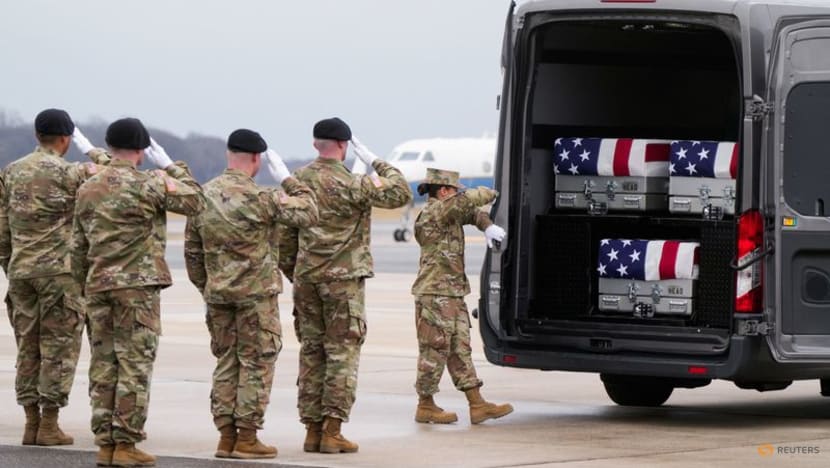Snap Insight: US has begun retaliation strikes for fatal drone attack. The message to Iran is clear
The use of B-1B bombers dispatched from America - instead of assets already deployed to the Middle East - demonstrates the reach of US power, says Carl Skadian, senior associate director at the Middle East Institute, NUS.


This audio is generated by an AI tool.
SINGAPORE: The United States has launched retaliatory strikes in Iraq and Syria, hitting 85 targets across seven locations in 30 minutes.
The overnight strikes would not have surprised observers, even though they mark a significant escalation in the Middle East conflict - and represent the failure of the US to prevent the war from widening.
The attacks were widely expected, given that a clearly telegraphed US red line was crossed when American troops were killed in a strike on an outpost in Jordan.
Indeed, President Joe Biden had said earlier in the week that he had decided on what the American response would be. The only questions were when the US would retaliate and the form it would take. But while unsurprising, there are several takeaways from the US action.
MUSCULARITY OF US ACTION
The first is that this is just the start. There will be more actions in the days to come: In a statement, Mr Biden said “our response began today. It will continue at times and places of our choosing”.
Also of note was the muscularity of the US action. The attacks were reportedly carried out by B-1B bombers dispatched from America, not assets that had been deployed to the Middle East. This demonstrates the reach of US power, and sends a clear warning to Iran and its proxies.
Before the attacks, Defense Secretary Lloyd Austin noted that Iran and its allies “have a lot of capability”. But, he added pointedly: “I have more”.
The “gas and go” mission by bombers flying thousands of kilometres non-stop demonstrated this. By not using in-theatre assets, the Americans have signalled both their reach and that they have plenty of power in reserve.
It should not be overlooked that no attacks were carried out on Iran itself.
In the days since US troops were killed, there was much speculation over whether Washington would go after Tehran. This resulted in a climbdown from the Islamic Republic, which said it was not looking to go to war with the US, as well as the group believed to be behind the fatal attack in Jordan, Kata’ib Hezbollah.
Earlier this week, it said it would suspend operations against US forces in the region - recognition that it had gone a step too far.
THE IRAN FACTOR
The Iranians were not totally unscathed, however. Washington has announced sanctions against senior members of the Islamic Revolutionary Guards Corps, as well as criminal charges against several people who had a direct role in funding Hamas and Hezbollah. The effects of these actions are negligible, however. Iran has long been under wide-ranging strictures, and the latest moves are unlikely to make things much worse for it.
What remains to be seen is whether both sides will decide that enough is enough, after all is said and done.
Iran will have to tread even more carefully now after the latest round of strikes. It must know that despite the latest US action, pressure is mounting on Mr Biden to do more.
Already, some Republicans have decried the American strikes as less than muscular. The president will have little wiggle room if Tehran does not get the message, more so since this is an election year.
In the Middle East, however, it is often said - with good reason - that there are no good options, only bad ones and worse ones.
Carl Skadian, a former journalist and editor for 30 years, is Senior Associate Director at the Middle East Institute, NUS.

















